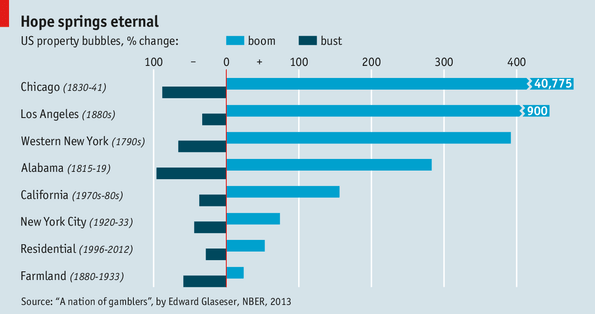Five routes to more innovative problem solving
Tricky problems must be shaped before they can be solved. To start that process, and stimulate novel thinking, leaders should look through multiple lenses.
April 2013 • Olivier Leclerc and Mihnea Moldoveanu
Source: Strategy Practice
Rob McEwen had a problem. The chairman and chief executive officer of Canadian mining group Goldcorp knew that its Red Lake site could be a money-spinner—a mine nearby was thriving—but no one could figure out where to find high-grade ore. The terrain was inaccessible, operating costs were high, and the unionized staff had already gone on strike. In short, McEwen was lumbered with a gold mine that wasn’t a gold mine.
Then inspiration struck. Attending a conference about recent developments in IT, McEwen was smitten with the open-source revolution. Bucking fierce internal resistance, he created the Goldcorp Challenge: the company put Red Lake’s closely guarded topographic data online and offered $575,000 in prize money to anyone who could identify rich drill sites. To the astonishment of players in the mining sector, upward of 1,400 technical experts based in 50-plus countries took up the problem. The result? Two Australian teams, working together, found locations that have made Red Lake one of the world’s richest gold mines. “From a remote site, the winners were able to analyze a database and generate targets without ever visiting the property,” McEwen said. “It’s clear that this is part of the future.”1
McEwen intuitively understood the value of taking a number of different approaches simultaneously to solving difficult problems. A decade later, we find that this mind-set is ever more critical: business leaders are operating in an era when forces such as technological change and the historic rebalancing of global economic activity from developed to emerging markets have made the problems increasingly complex, the tempo faster, the markets more volatile, and the stakes higher. The number of variables at play can be enormous, and free-flowing information encourages competition, placing an ever-greater premium on developing innovative, unique solutions.
This article presents an approach for doing just that. How? By using what we call flexible objects for generating novel solutions, or flexons, which provide a way of shaping difficult problems to reveal innovative solutions that would otherwise remain hidden. This approach can be useful in a wide range of situations and at any level of analysis, from individuals to groups to organizations to industries. To be sure, this is not a silver bullet for solving any problem whatever. But it is a fresh mechanism for representing ambiguous, complex problems in a structured way to generate better and more innovative solutions.
The flexons approach
Finding innovative solutions is hard. Precedent and experience push us toward familiar ways of seeing things, which can be inadequate for the truly tough challenges that confront senior leaders. After all, if a problem can be solved before it escalates to the C-suite, it typically is. Yet we know that teams of smart people from different backgrounds are more likely to come up with fresh ideas more quickly than individuals or like-minded groups do.2 When a diverse range of experts—game theorists to economists to psychologists—interact, their approach to problems is different from those that individuals use. The solution space becomes broader, increasing the chance that a more innovative answer will be found.
Obviously, people do not always have think tanks of PhDs trained in various approaches at their disposal. Fortunately, generating diverse solutions to a problem does not require a diverse group of problem solvers. This is where flexons come into play. While traditional problem-solving frameworks address particular problems under particular conditions—creating a compensation system, for instance, or undertaking a value-chain analysis for a vertically integrated business—they have limited applicability. They are, if you like, specialized lenses. Flexons offer languages for shaping problems, and these languages can be adapted to a much broader array of challenges. In essence, flexons substitute for the wisdom and experience of a group of diverse, highly educated experts.
To accommodate the world of business problems, we have identified five flexons, or problem-solving languages. Derived from the social and natural sciences, they help users understand the behavior of individuals, teams, groups, firms, markets, institutions, and whole societies. We arrived at these five through a lengthy process of synthesizing both formal literatures and the private knowledge systems of experts, and trial and error on real problems informed our efforts. We don’t suggest that these five flexons are exhaustive—only that we have found them sufficient, in concert, to tackle very difficult problems. While serious mental work is required to tailor the flexons to a given situation, and each retains blind spots arising from its assumptions, multiple flexons can be applied to the same problem to generate richer insights and more innovative solutions.
Networks flexon
Imagine a map of all of the people you know, ranked by their influence over you. It would show close friends and vague acquaintances, colleagues at work and college roommates, people who could affect your career dramatically and people who have no bearing on it. All of them would be connected by relationships of trust, friendship, influence, and the probabilities that they will meet. Such a map is a network that can represent anything from groups of people to interacting product parts to traffic patterns within a city—and therefore can shape a whole range of business problems.
For example, certain physicians are opinion leaders who can influence colleagues about which drugs to prescribe. To reveal relationships among physicians and help identify those best able to influence drug usage, a pharmaceutical company launching a product could create a network map of doctors who have coauthored scientific articles. By targeting clusters of physicians who share the same ideas and (one presumes) have tight interactions, the company may improve its return on investments compared with what traditional mass-marketing approaches would achieve. The network flexon helps decompose a situation into a series of linked problems of prediction (how will ties evolve?) and optimization (how can we maximize the relational advantage of a given agent?) by presenting relationships among entities. These problems are not simple, to be sure.3But they are well-defined and structured—a fundamental requirement of problem solving. Read more of this post














